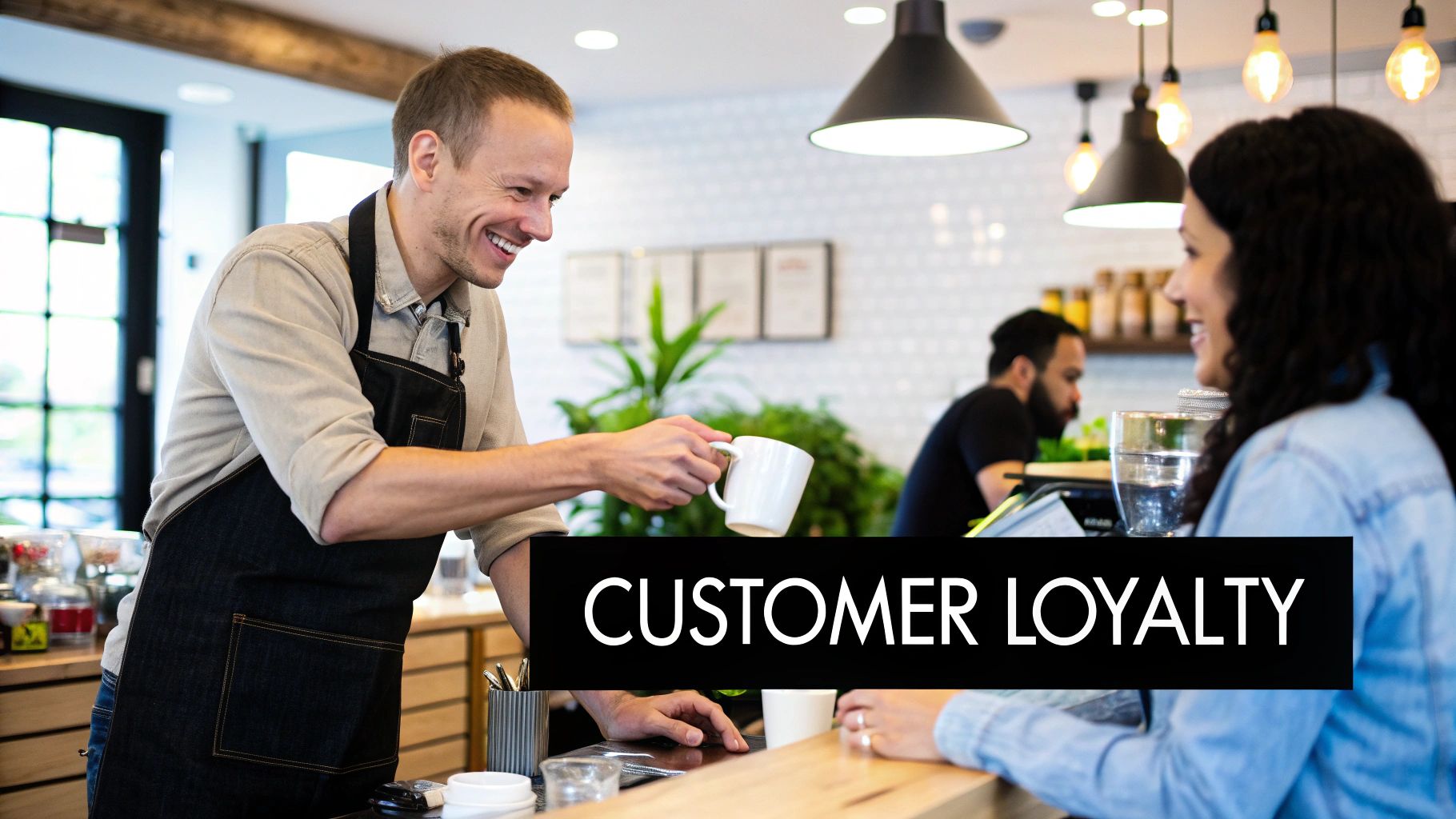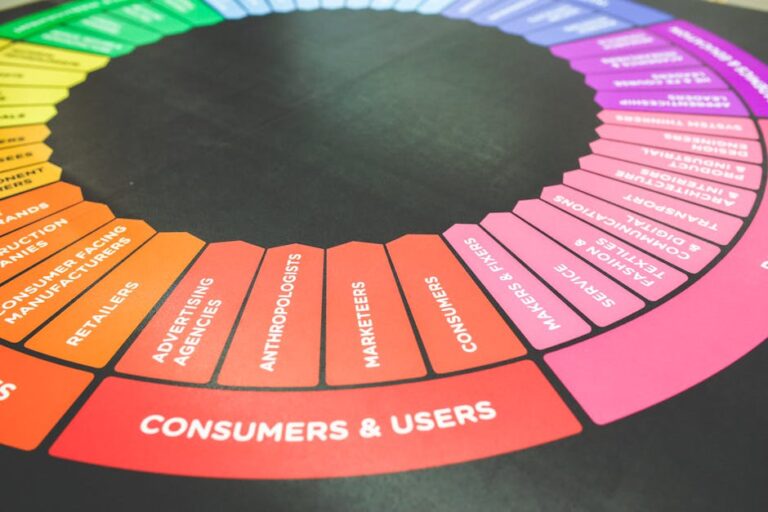In today's competitive landscape, simply offering a great service isn't enough to guarantee success. The service industry operates on a foundation of trust, relationships, and proven expertise, which requires a more nuanced approach than traditional product-based campaigns. Your marketing must do more than just sell; it needs to build confidence, demonstrate value, and foster loyalty. Outdated tactics no longer cut through the noise, making a modern playbook essential for growth.
This guide moves beyond generic advice to deliver nine actionable marketing strategies for the service industry that you can implement immediately. We will explore powerful techniques ranging from Relationship Marketing and Service Quality Differentiation to hyperlocal community engagement and strategic partnerships. Each strategy is broken down into a clear, practical framework designed for business owners and franchise operators seeking tangible results.
You will learn how to transform your service into an unforgettable experience, build a powerful referral engine, and establish your brand as a trusted authority. Forget abstract theories; this is a straightforward roadmap to attracting, engaging, and retaining high-value clients. Let's dive into the specific tactics that will help your service business not just compete, but thrive.
1. Cultivate Lasting Connections with Relationship Marketing
Unlike product-based businesses that can rely on the tangible item itself, service businesses sell an experience, expertise, and trust. This is why relationship marketing, a strategy focused on building long-term customer connections over one-time sales, is one of the most powerful marketing strategies for the service industry. It shifts the goal from acquisition to retention, recognizing that loyal, repeat customers are more profitable and become brand advocates.

The core idea is to transform a transactional dynamic into a relational one. A local accounting firm, for instance, could use a CRM to track a client's business anniversary and send a congratulatory note, or a spa could remember a regular client's preference for a specific essential oil. These small, personalized gestures build an emotional connection that transcends price, making clients less likely to switch providers.
How to Implement Relationship Marketing
Building strong customer relationships requires a deliberate, system-wide approach. It’s not just about being friendly; it’s about creating a structure that enables personalized, consistent care at every touchpoint.
- Invest in a CRM System: Use a Customer Relationship Management (CRM) tool like Salesforce or HubSpot to track every interaction. Practical Insight: A plumbing company could note a client's aging water heater and set a reminder to send them a maintenance tip or a replacement offer in a year, showing proactive care.
- Empower Your Entire Team: Train every employee, from the front desk to the service provider, on the importance of recognizing and catering to individual client needs. A technician who remembers a past issue and asks about it shows the client they are valued, not just a number.
- Develop a Meaningful Loyalty Program: Go beyond simple discounts. Offer rewards that provide genuine value. Practical Example: A B2B IT support firm could offer loyal clients a free annual cybersecurity audit—a high-value service that reinforces their role as a trusted partner.
- Actively Solicit and Act on Feedback: Regularly send out satisfaction surveys. The crucial step is to follow up. Practical Example: If a client gives a low score after a service call, the manager should personally call them, understand the issue, and offer a concrete solution, turning a detractor into a loyalist.
2. Differentiate with Superior Service Quality Management
In a crowded market, where competitors often offer similar services at comparable prices, service quality itself can become your most powerful marketing tool. This strategy focuses on embedding excellence into every customer interaction, creating a reputation for reliability, consistency, and exceeding expectations. It shifts the competitive battleground from price to value, using superior service as a key differentiator.
The goal is to make your service experience so exceptional that it becomes a core reason clients choose you and stay with you. For example, a local IT support company can differentiate itself by guaranteeing a one-hour response time and having technicians who can explain complex issues in simple terms. This creates a reputation for reliability that justifies a premium price, moving the conversation away from just hourly rates.
How to Implement Service Quality Management
Delivering consistently high-quality service isn't an accident; it’s the result of deliberate systems, training, and a company-wide commitment to excellence. This approach requires operationalizing your brand promise at every level.
- Develop Clear Service Standards: Document your ideal customer experience with Standard Operating Procedures (SOPs). Practical Example: A house cleaning service’s SOP could mandate that cleaners leave a branded, handwritten "thank you" note on the kitchen counter after every service.
- Invest Heavily in Employee Training: Your team is your service. Provide continuous training not only on technical skills but also on soft skills like communication, empathy, and problem-solving. Empower them to make decisions that benefit the customer on the spot.
- Implement Quality Auditing Programs: Use tools like mystery shopping, customer satisfaction surveys (e.g., NPS), and regular performance reviews to measure adherence to your service standards. Practical Insight: The owner of a landscaping franchise could personally visit one job site per week to ensure crews are meeting the company's standards for cleanliness and client communication.
- Create Robust Service Recovery Procedures: Mistakes will happen. What sets great service businesses apart is how they fix them. Establish a clear process. Practical Example: A catering company's policy might be to offer a 50% refund and a credit for a future event if they are more than 30 minutes late, no questions asked.
3. Build Authority with a Robust Digital Presence
In today’s market, your digital presence is your storefront. For service businesses, where credibility is paramount, a strong online presence isn't just an option; it's a fundamental marketing strategy for attracting and converting clients. This comprehensive approach involves using websites, social media, and search engines to showcase expertise, build brand awareness, and create a seamless path for potential customers to find and engage with your services.

The goal is to be visible and valuable wherever your target audience is looking for solutions. A financial advisor might use a blog and LinkedIn to share insights on market trends, while a home cleaning service could leverage Instagram and Facebook to display before-and-after transformations and share customer testimonials. This strategy positions your business as an accessible, trustworthy authority, making it the clear choice when a customer is ready to buy.
How to Implement a Digital Presence Strategy
Creating an effective online footprint requires a multi-channel, strategic approach focused on providing value and demonstrating your unique service capabilities. It’s about building a digital ecosystem that works together to attract, engage, and convert leads.
- Invest in Professional Web Design: Your website is your digital hub. Ensure it is professionally designed, mobile-responsive, easy to navigate, and clearly communicates your service offerings. Practical Insight: Include a clear "Book a Consultation" button on every page, making it effortless for visitors to take the next step.
- Execute a Content Marketing Plan: Develop a content calendar to consistently publish helpful blog posts, guides, or videos that address your ideal client's pain points. Practical Example: An HVAC company could create a blog post titled "5 Simple Ways to Lower Your Summer AC Bill," which attracts local homeowners searching for solutions.
- Master Local SEO: For most service businesses, local clients are key. Optimize your Google Business Profile, build local citations, and gather online reviews to appear prominently in local search results.
- Engage on Relevant Social Platforms: Don't try to be everywhere. Practical Example: A B2B consulting firm should focus on LinkedIn by sharing client success stories and industry analysis, rather than wasting resources on a platform like TikTok where their audience is less likely to be active.
4. Craft Memorable Interactions with Experiential Marketing
Services are intangible, which can make them difficult for potential customers to evaluate. Experiential marketing bridges this gap by creating immersive, memorable events that allow people to interact with your brand and sample your service in a tangible way. This strategy moves beyond traditional advertising to build genuine emotional connections, turning passive observers into active participants.

The goal is to let customers "feel" the value of your service before they commit. For instance, a financial advisory firm could host a free, interactive retirement planning workshop, or a fitness studio could offer an open-house day with mini-classes and trainer consultations. These experiences demonstrate expertise and build trust in a low-pressure environment, making it a highly effective marketing strategy for the service industry.
How to Implement Experiential Marketing
Successful experiential marketing requires careful planning to ensure the event authentically reflects your brand and delivers real value to attendees. It’s about creating a moment, not just a promotion.
- Align the Experience with Your Brand: The event must directly relate to your core service and brand values. A luxury spa's experience should feel calming and exclusive, while a high-energy marketing agency's event should be creative and dynamic.
- Create Shareable Moments: Design the experience with social media in mind. Practical Example: A catering company hosting a tasting event could set up a beautifully lit "foodie photo booth" with branded props, encouraging guests to post on Instagram.
- Train Staff for Exceptional Delivery: Your team is the face of the experience. Ensure they are well-trained, enthusiastic, and fully equipped to engage with attendees, answer questions, and embody your brand's promise.
- Capture Leads for Follow-Up: Don't let the connection end with the event. Practical Insight: Use a simple QR code at the event for registration. Offer an exclusive discount to attendees who sign up, giving you a warm lead list for immediate follow-up.
5. Harness the Power of Word-of-Mouth and Referral Marketing
In the service industry, trust is the ultimate currency. Word-of-mouth and referral marketing are strategies designed to leverage your most valuable asset: satisfied customers. This approach encourages existing clients to become brand advocates, promoting your services through personal recommendations that carry far more weight than traditional advertising. It capitalizes on the high level of trust people place in suggestions from friends and family.
This strategy turns exceptional service delivery into a powerful, self-sustaining marketing engine. For example, a home cleaning service that consistently delights clients will naturally be recommended to neighbors. Similarly, a financial advisor who helps a client achieve a major goal is likely to be mentioned to that client’s colleagues. The key is to transform passive satisfaction into active promotion.
How to Implement Word-of-Mouth and Referral Marketing
Actively encouraging referrals requires more than just hoping clients will talk about you; it involves creating a formal system that makes it easy and rewarding for them to share their positive experiences.
- Create a Structured Referral Program: Don't leave it to chance. Practical Example: A landscaping company could offer a "Refer a Neighbor" program where both the existing client and the new neighbor get $50 off their next service. This is simple, tangible, and highly motivating.
- Ask at Peak Satisfaction Moments: The best time to ask for a referral is right after a client has expressed satisfaction. Practical Insight: When a client emails to praise your team's work, respond with, "Thank you so much! We're thrilled you're happy. We grow our business through clients like you, and we'd be grateful if you shared your experience with anyone you know who might need our help."
- Make Sharing Effortless: Provide clients with a unique referral link, a pre-written email template, or shareable social media content. The fewer steps they have to take, the more likely they are to follow through.
- Monitor and Engage with Online Reviews: Online reviews are the digital form of word-of-mouth. Actively monitor platforms like Google and Yelp. Practical Insight: When you receive a 5-star review, don't just reply with "Thank you." Personalize it: "Thanks, Jane! It was a pleasure helping you with your kitchen renovation. We're so glad you love the new countertops!"
6. Establish Authority with Content Marketing and Thought Leadership
For service businesses, expertise is the product. Content marketing is a strategic approach that makes this expertise visible and valuable to a target audience before they ever make a purchase. By creating and distributing relevant, problem-solving content, you shift from "selling" to "educating," positioning your brand as a trusted authority and the go-to expert in your field. This is one of the most effective long-term marketing strategies for the service industry.

This strategy works because it addresses customer questions and concerns, building trust and credibility over time. A financial advisory firm, for example, could publish a guide on "Navigating Market Volatility," while a digital marketing agency might create a webinar on the latest social media algorithm changes. This content attracts qualified leads who are actively seeking solutions, making the sales process more natural and effective.
How to Implement Content Marketing
A successful content strategy is built on consistently delivering value, not just promoting your services. It requires a deep understanding of your audience's pain points and a commitment to helping them.
- Focus on Solving Customer Problems: Center your content around the questions your customers ask most frequently. Practical Example: A law firm specializing in small business could write a blog series on "Top 10 Legal Mistakes New Entrepreneurs Make," directly addressing a core fear of their target audience.
- Maintain a Consistent Publishing Schedule: Consistency builds anticipation and keeps your audience engaged. Whether it’s a weekly blog post or a monthly industry report, a regular cadence signals reliability and keeps your brand top of mind.
- Repurpose Content Across Multiple Channels: Maximize your efforts. Practical Insight: A 2,000-word blog post can be turned into a 10-point Twitter thread, five Instagram graphics with key quotes, a short explainer video for YouTube, and a checklist for your email newsletter.
- Use Data and Research to Support Claims: Back up your expertise with original research, case studies, or data-driven insights. This elevates your content from opinion to authoritative analysis. For B2B services, developing a content strategy is particularly vital. Learn more about how to develop a B2B content marketing strategy.
7. Forge Strategic Alliances with Partnership Marketing
No business operates in a vacuum, and one of the most effective marketing strategies for the service industry involves leveraging the power of collaboration. Partnership marketing is a strategic approach where two or more non-competing businesses team up to cross-promote their services. This creates a symbiotic relationship that provides mutual benefits, including access to new audiences, enhanced credibility, and shared marketing costs.
This strategy works because it taps into the existing trust and loyalty of another company's customer base. For example, a high-end interior design firm could partner with a luxury real estate agency. The agency could offer new homeowners a complimentary design consultation, providing the designer with a qualified lead and the agency with a value-added service that differentiates them from competitors. Similarly, a local gym could partner with a nearby health food store to offer mutual discounts.
How to Implement Partnership Marketing
Successful partnerships are built on a foundation of shared goals, clear communication, and mutual value. A well-structured alliance can become a powerful and cost-effective customer acquisition channel.
- Identify Complementary Partners: Look for businesses that serve a similar target demographic but don't directly compete with you. Practical Example: A pet grooming service could partner with a local veterinarian's office. The vet could give out coupons for the groomer, and the groomer could display the vet's business cards.
- Establish a Clear Agreement: Don't rely on a handshake. Draft a formal agreement that outlines the responsibilities of each party, the specifics of the joint offer, how leads will be tracked, and the duration of the partnership.
- Create Joint Marketing Campaigns: Pool your resources to develop co-branded materials. Practical Insight: A wedding photographer and a florist could co-author a "Local Wedding Planning Guide" e-book, promoting it to both of their email lists and capturing leads for both businesses.
- Track and Measure Performance: Use unique discount codes, dedicated landing pages, or CRM tracking to monitor the results of your partnership. Regularly review key metrics like lead generation and conversion rates to assess the ROI and make necessary adjustments.
8. Dominate Your Area with Local and Community Marketing
For service businesses that operate within a specific geographic area, local marketing is not just a strategy; it's a lifeline. This approach focuses on building a strong, visible, and trusted presence within your immediate community. Unlike broad digital campaigns, it targets potential customers right where they live, work, and make purchasing decisions, fostering a sense of familiarity and reliability that national brands often struggle to replicate.
The goal is to become the go-to provider in your town or neighborhood. A home services company might sponsor a local little league team, while a local law firm hosts free community workshops on estate planning. These actions build goodwill and brand recognition, making your business the first one that comes to mind when a need arises. It's one of the most effective marketing strategies for the service industry because it builds trust on a personal, face-to-face level.
How to Implement Local and Community Marketing
Effective community marketing integrates your business into the local fabric through both digital and physical engagement. It’s about showing up, participating, and demonstrating your commitment to the community you serve.
- Optimize Your Digital Local Presence: Start by claiming and fully optimizing your Google Business Profile. Practical Insight: Use the "Posts" feature on your Google Business Profile to announce special offers, share photos of recent work, or highlight a "Team Member of the Month," keeping your profile fresh and engaging.
- Engage with Community Organizations: Actively participate in the local chamber of commerce, join business associations, and attend networking events. Sponsoring community events, from charity runs to local festivals, puts your brand directly in front of an engaged local audience.
- Build Local Partnerships: Create referral networks with non-competing local businesses. An accounting firm could partner with a local bank, or a landscaping company could team up with a real estate agent for cross-promotions that benefit everyone.
- Leverage Local Voices: Showcase testimonials from well-known local clients to build social proof. To maximize your impact in your community, learning how to find local influencers can be incredibly effective for driving real results. You can read a detailed guide on how to build a powerful local marketing strategy.
9. Personalization and Customer Segmentation
In the service industry, treating every customer the same is a missed opportunity. Personalization and customer segmentation is a marketing strategy that involves dividing your broad audience into smaller, distinct groups based on shared characteristics. This allows you to tailor your messaging, offers, and even service delivery to resonate more deeply with each segment, making your marketing efforts far more effective.
This approach moves beyond one-size-fits-all marketing. For example, a financial advisory firm might segment its clients into "young professionals saving for a first home" and "pre-retirees focused on wealth preservation." Each group receives different content, such as a guide to mortgages for the former and an estate planning webinar for the latter. This relevance builds trust and demonstrates a genuine understanding of client needs.
How to Implement Personalization and Segmentation
Effective segmentation relies on data to create meaningful groups and deliver relevant experiences. The goal is to make each customer feel understood and individually valued, which is a cornerstone of great service.
- Start with Broad Segments: Begin by grouping customers based on clear data points. Practical Example: A fitness studio could segment its members into "morning class attendees," "weekend warriors," and "personal training clients" to send them more relevant class schedules and offers.
- Leverage Your CRM Data: Use your Customer Relationship Management system to track purchase history, preferences, and past communications. This data is a goldmine for identifying patterns and creating highly specific customer segments.
- Craft Tailored Messaging: Develop unique email campaigns, social media ads, and service offers for each segment. Practical Example: A landscaping company could send a lawn aeration special to clients with large yards while sending a patio design offer to those with smaller, urban spaces.
- Automate Where Possible: Use marketing automation tools to send personalized communications triggered by customer actions. Practical Insight: After a client's first visit, a spa could automatically send an email with a special "welcome back" offer for a different service, encouraging them to explore more of what's available.
Marketing Strategies Comparison Matrix
| Strategy | Implementation Complexity 🔄 | Resource Requirements ⚡ | Expected Outcomes 📊 | Ideal Use Cases 💡 | Key Advantages ⭐ |
|---|---|---|---|---|---|
| Relationship Marketing | Moderate to High 🔄 | High (CRM systems, staff training)⚡ | Long-term customer loyalty and retention 📊 | Service industries with repeat customers 💡 | High customer lifetime value; competitive loyalty ⭐ |
| Service Quality Management | High 🔄 | High (training, monitoring systems)⚡ | Strong differentiation and trust 📊 | Businesses emphasizing consistency 💡 | Premium pricing; reduced churn ⭐ |
| Digital Marketing and Online Presence | Moderate 🔄 | Moderate to High (content creation, tools)⚡ | Broad reach with measurable ROI 📊 | Brands targeting large, tech-savvy audiences 💡 | Cost-effective reach; targeted advertising ⭐ |
| Experiential Marketing | High 🔄 | High (event planning, logistics) ⚡ | Memorable brand impressions 📊 | Brands needing emotional engagement 💡 | Emotional connections; social media content ⭐ |
| Word-of-Mouth and Referral Marketing | Low to Moderate 🔄 | Low to Moderate (referral programs)⚡ | High trust customer acquisition 📊 | Service businesses relying on advocacy 💡 | Cost-effective; high conversion rates ⭐ |
| Content Marketing and Thought Leadership | Moderate 🔄 | Moderate (consistent content creation)⚡ | Authority building and qualified leads 📊 | Companies focusing on education & expertise 💡 | Builds credibility; long-term SEO benefits ⭐ |
| Partnership and Alliance Marketing | Moderate to High 🔄 | Moderate (coordination, shared resources)⚡ | Access to new customers and shared risks 📊 | Businesses seeking complementary growth 💡 | Expanded reach; shared costs and expertise ⭐ |
| Local and Community Marketing | Moderate 🔄 | Moderate (local events, SEO) ⚡ | Strong local presence and trust 📊 | Local service providers and small businesses 💡 | Word-of-mouth amplification; market penetration ⭐ |
| Personalization and Customer Segmentation | High 🔄 | High (data systems, analytics) ⚡ | Higher engagement and conversion rates 📊 | Businesses with diverse customer bases 💡 | Efficient marketing spend; better insights ⭐ |
Putting Your Service Marketing Strategy into Action
Navigating the competitive landscape of the service industry requires more than just delivering an excellent service; it demands a marketing approach that builds trust, showcases value, and fosters lasting relationships. The strategies detailed in this article, from cultivating deep customer relationships to establishing thought leadership through content, provide a comprehensive roadmap. The common thread is a relentless focus on the customer experience, recognizing that in the service sector, your marketing is not separate from your operations, it is your operation.
The challenge now is to translate this knowledge into tangible results. Don't fall into the trap of trying to implement all nine strategies at once. Instead, perform a candid assessment of your business. Where are your biggest opportunities for growth? A local landscaping company might see immediate returns from a focused community marketing and referral program, while a B2B consulting firm could gain significant traction by investing in content marketing and strategic partnerships.
Your Blueprint for Implementation
The most effective marketing strategies for the service industry are not one-size-fits-all. They are tailored, integrated, and consistently executed. To begin, select two or three strategies that feel most aligned with your brand and resources. For example, you might decide to pair a robust digital marketing plan with a renewed focus on personalization and customer segmentation.
Once you have your priorities, create a clear, actionable plan. As you prepare to implement these strategies, having a structured approach to planning your campaigns will be invaluable. You can utilize a practical marketing campaign planning template to ensure all aspects, from budget allocation to performance metrics, are covered. This structured approach prevents you from simply "doing marketing" and empowers you to build a cohesive system that drives predictable growth.
Ultimately, marketing a service is a continuous cycle of listening, adapting, and delivering on your promises. The strategies you deploy are the tools you use to communicate your unique value proposition and build a loyal customer base. By choosing the right tools and executing with precision, you can turn your marketing efforts into your most powerful asset, ensuring a full schedule and a thriving bottom line for years to come.
Ready to turn these powerful strategies into measurable business growth? The expert team at Latitude Park specializes in executing high-performance digital advertising and SEO campaigns specifically for service-based businesses and franchises. Schedule a consultation with Latitude Park today to build a marketing engine that delivers real results.









